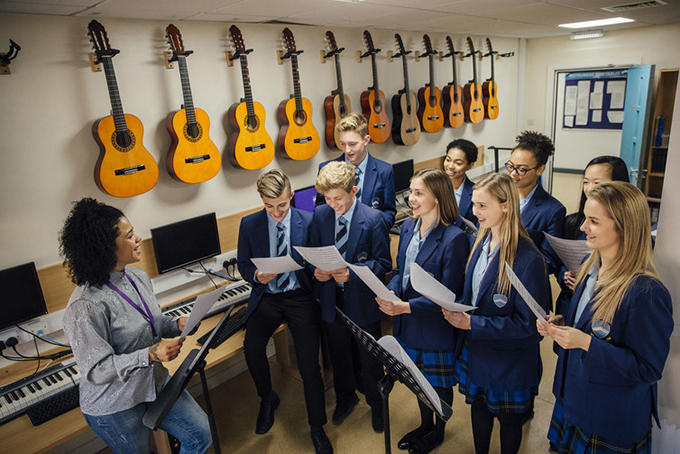With the recent news that more than £500m has been set aside by the UK government for new free schools – many of which could well become grammar schools – the selective schooling debate is firmly back on the table.
This £500m includes a one-off payment of £320m which will be allocated to help set up 140 new free schools. This comes on top of the already promised £216m which will help to rebuild and refurbish existing schools. The 140 new schools are in addition to the 500 already pledged to be created by 2020, and will pave the way for a new generation of grammar schools.
The cash boost comes as a schools white paper will be published over the next few weeks. It will include plans to reverse the ban on new grammars. The ban has been in place for nearly 20 years, but the UK prime minister Theresa May has said it is her “personal mission” to overturn the ban and create a grammar schools revolution.
And yet despite May’s championing of grammars, a lot of recent research has demonstrated strong inequalities in access to selective schools.
Highly skewed
For the first time – through our new research – we can show the differences in the likelihood of attending a grammar school depending on your socioeconomic status (SES). This is the most detailed measure of family circumstances available to date in administrative data.
Our analysis confirms that access to grammar schools is highly skewed by a child’s socioeconomic status – with the most deprived families living in grammar school areas standing only a 6% chance of attending a selective school.
For our analysis, we adopted this SES index which uses individual free school meal eligibility, and enriches it with very local neighbourhood measures based on the pupil’s postcode.
The measures include the type of neighbourhood, levels of deprivation, and the occupational structure, along with levels of education and home ownership figures. All this information is then combined to produce an index of socioeconomic status for each pupil in our data.
This allows for a considerably broader measure than simply using eligibility for free school meals, which most other analyses have used.
Just for the wealthy
In our analysis, we compared how pupils from different social backgrounds fare when it comes to grammar selection. This includes the “just about managing”, as well as the middle classes, and the most affluent.
Our analysis shows clearly that it is mostly the very affluent that make it into grammar schools – and that there is a dramatic difference in access to selective schools depending on the pupil’s background.
The average chance of getting in in selective areas is below 50% for almost all families. But when you break this figure down and analyse it based on the pupil’s SES – or their background – the data reveals a more complex story.
We show that only the most affluent families – the top 10% by SES – have a 50% or better chance of attending a grammar. While those pupils at the very top – the 1% most affluent – have an 80% chance of attending a grammar.
Looking at the graph, if we approximate the “just about managing” families – otherwise known as the Jams – as those in the range from the 20th to the 40th percentile of SES, they have only a 12% chance of attending a grammar school. These families have featured prominently in Theresa May’s rhetoric since she became prime minister, and yet so few make it into grammar schools.
As the graph shows, families in the middle of the SES distribution also generally do not get into grammars. Of typical families, in the middle of the SES distribution, our analysis shows that only 23% attend a selective school.
Differences in access
Given the strong link between SES and achievement – even at age 11 – it may be the case that these SES gradients are simply reflecting higher achievement among pupils from more affluent families.
But our analysis also shows that the chances of accessing a grammar school vary hugely by family background, even when we compare children who have the same attainment at age 11.
Let’s look at two children – one from the poorest SES quintile and one from the least deprived SES quintile – both performing at the 80th percentile of the Key Stage 2 distribution. Despite the same level of academic attainment, our analysis shows that the most deprived pupil has only a 25% chance of attending a grammar compared to a 70% chance for the least deprived pupil.
This a 45 percentage point gap for children with the same achievement at age 11 – which clearly can be seen in the graph below.
What this means in real terms is that children from the most affluent families performing in as low as the 35th percentile of the Key Stage 2 distribution have a positive chance of accessing a grammar school in selective areas.
Meanwhile, those children from the most deprived families need to be achieving in at least the 50th percentile before there is any chance of them attending a grammar school.
This shows how grammars remain the preserve of the affluent. Because even children from disadvantaged backgrounds who perform very well at primary school have less chance of getting into these schools than affluent children who perform moderately well.
Of course, the argument will be that the “new grammars” will be different and (somehow) give greater access to children from more deprived backgrounds.
Yet there are no details of the mechanisms that could be put in place to prevent them having the same access issues as the existing schools. And as the evidence here suggests, affluent parents seem to be very good at getting their kids in to grammars, irrespective of their primary school performance.
Author Bios: Simon Burgess is a Professor of Economics at the University of Bristol, Claire Crawford is an Assistant Professor, Economics Department at the University of Warwick and Lindsey Macmillan is a Senior Lecturer in Economics at UCL


